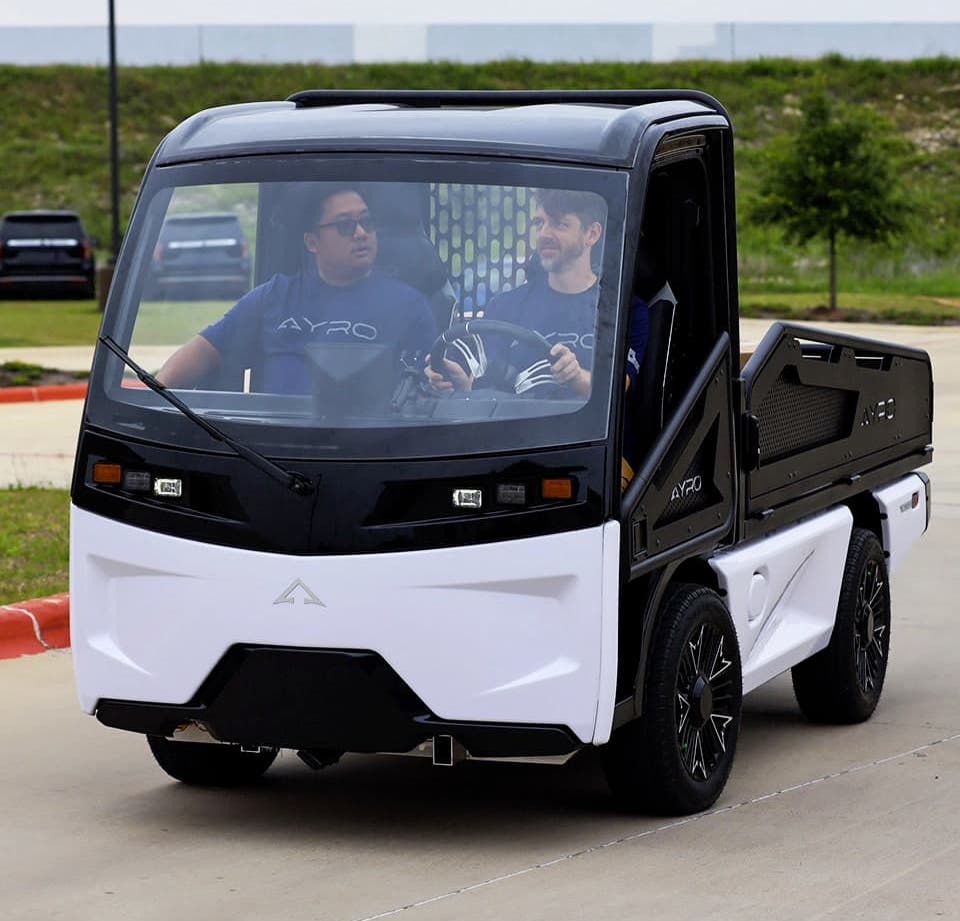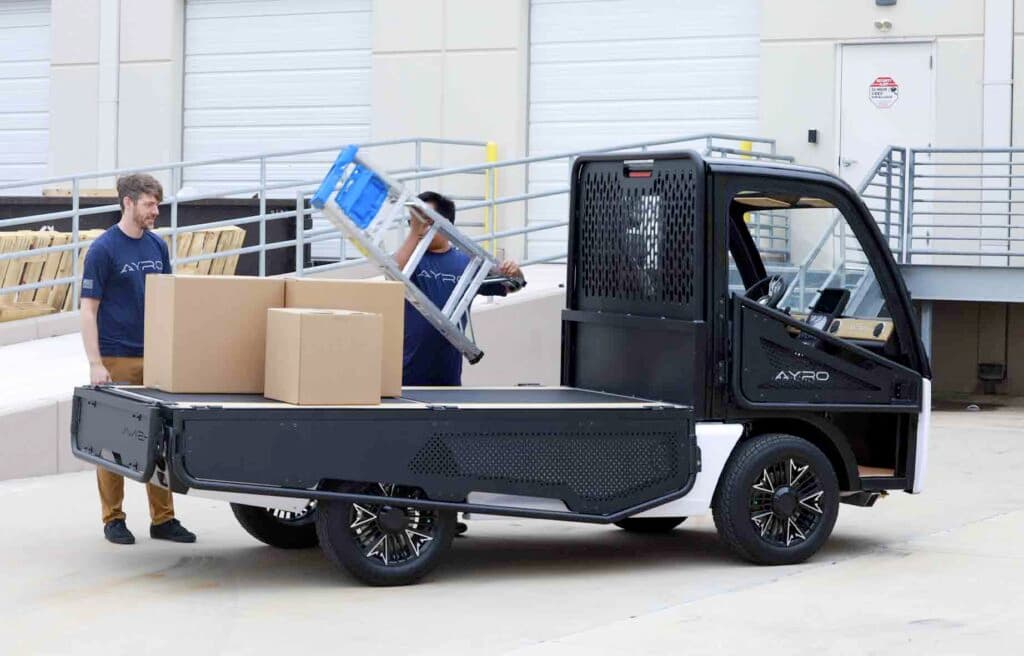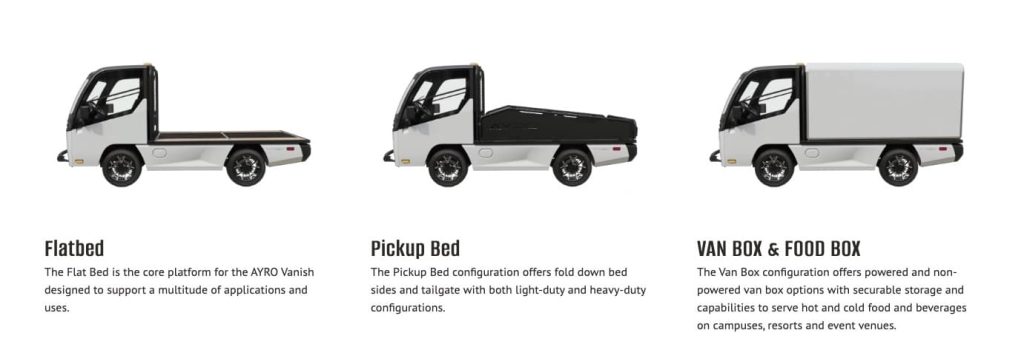
The AYRO Vanish has grabbed headlines over the past year as it rolls ever closer to production at AYRO’s Texas factory. Now the electric mini-truck’s final step ahead of manufacturing has begun as the Vanish starts street-legal homologation.
The AYRO Vanish is an electric utility vehicle that is designed to fit into the low-speed vehicle (LSV) federal designation. The mini-truck uses a lightweight architecture to limit the entire vehicle weight and maximize the allowable payload.
The Vanish boasts a payload of up to 1,200 lb (544 kg), which is fairly close to many standard-sized pickup trucks. For comparison, a 2023 Ford F-150’s payload capacity starts at 1,310 lb (594 kg). The company also indicated that it plans to produce a non-street legal variant that will have a higher payload capacity of 1,800 pounds (816 kg). That model would be applicable to work sites, campuses and other areas where use on public roads is not required.

Unlike standard pickup trucks, the Vanish offers highly adaptable configurations. Optional rear cargo configurations including food boxes, flat beds, utility beds with three-sided tailgates, and van boxes for secure storage all point to potential commercial applications for the vehicle.
And those future commercial customers could be getting their hands on the Vanish’s steering wheel sooner rather than later. Heading for homologation testing means that the company is now closer than ever to putting those various designs on the road.
As AYRO CEO Tom Wittenschlaeger explained:
“Now that we’ve completed our internal testing, it’s time to ensure that the award-winning Vanish meets requirements of our national governing bodies. Once we’ve completed this process and receive final approval, we can begin delivering vehicles to our customers and dealers.”

In order for any road-worthy vehicle to be considered for sale, the vehicle must go through homologation to ensure it is safe and complies with government regulations.
LSVs have reduced regulatory hurdles, but there are still many safety requirements and design considerations to be addressed. The vehicles must meet regulations for the construction, design, durability, and performance requirements as outlined by federal governing bodies. In the US, this process is governed by the National Highway Traffic Safety Administration (NHTSA).
This complex process of homologation allows for vehicles to be officially classified by date and category as well as have official and certifiable technical information and specifications. The Vanish is completing homologation for both the United States and Canada, for which testing includes the Federal Motor Vehicle Safety Standards (FMVSS) 500, Canada Motor Vehicle Safety Standards (CMVSS) 500 and California Air Resources Board (C.A.R.B.).

In parallel with its homologation phase, AYRO is now planning to begin Low Rate Initial Production (LRIP) by early June to begin building the first 50 Vanish units that will be used as demo models for signed dealers.
The company plans to enter full-scale production upon the successful completion of its first 50 units.
As AYRO’s senior vice president of programs added:
“Our team has worked diligently to prepare for this day. This is one of the final steps in our product development process. Concurrently with homologation, we plan to begin LRIP and immediately following begin delivering vehicles to our customers and dealers.”
The AYRO Vanish opened for orders earlier this month, launching at a starting price of $33,990. While that price is more expensive than several other imported electric mini-trucks, the Vanish’s modular design (and soon-to-be street legal status) is a key differentiator.

AYRO’s vice president of Dealer Sales, Terry Kahl, previously explained the advantages of a modular platform:
With swappable bed configurations, we believe dealers can find a use case for the Vanish with almost any of their existing clientele. We have indications of interest from a rapidly growing number of dealers and now incoming dealers can find added value in that AYRO is accepting their pre-orders even before they join our dealer network. It should be an absolute win-win for our existing and onboarding dealers as well as future dealers.
Author: Micah Toll
Source: Electrek



